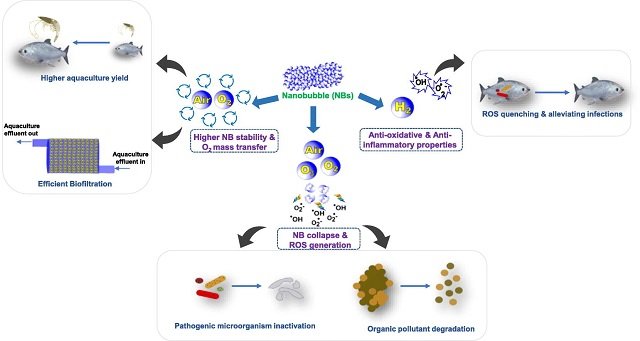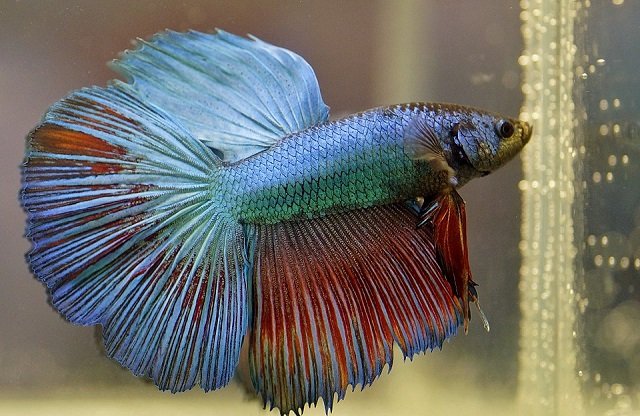
Aquaculture faces significant challenges related to global population growth and the need to increase food production. To address these challenges, the aquaculture industry has turned to genetic improvement of aquatic species, and CRISPR/Cas technology has emerged as a promising tool in this field.
In this context, researchers from Atatürk University, Western Caspian University, and Southwest University published the study “CRISPR-Based Genetic Improvement of Aquaculture Species,” highlighting the potential of CRISPR/Cas to revolutionize aquaculture by enhancing economically important traits.
What is CRISPR-Cas9?
The CRISPR/Cas9 system is an advanced genetic engineering tool that stands out for being cost-effective, easy to use, and highly efficient for genome editing at specific sites. Unlike conventional genome editing techniques, CRISPR/Cas9 enables the industry to overcome large-scale challenges in aquaculture due to factors such as high fertility, external fertilization, short generation times, and well-established breeding methods.
CRISPR-Cas9 is a genome editing tool derived from the immune system of bacteria and archaea. It allows scientists to make precise modifications to an organism’s DNA, enabling improvements in specific traits such as growth rate, disease resistance, and reproductive efficiency. Unlike traditional genetic modification techniques, CRISPR-Cas9 is cost-effective, user-friendly, and highly precise, making it an ideal tool for improving aquaculture species.
Applications of CRISPR-Cas9 in Aquaculture
The main applications of CRISPR in aquaculture include genetic enhancement in key areas such as disease resistance, reproduction, growth and muscle development, pigmentation, and omega-3 fatty acid metabolism.
Disease resistance
Diseases pose a significant challenge in aquaculture, often leading to substantial economic losses. CRISPR-Cas9 offers a promising solution by enabling the modification of genes associated with disease resistance. For example, researchers have successfully used CRISPR-Cas9 to enhance the resistance of channel catfish to bacterial infections by integrating antimicrobial peptide genes. Similarly, the deletion of the gal3 gene in Asian sea bass has been shown to improve resistance to viral nervous necrosis, a common and devastating disease in aquaculture.
Reproductive control
CRISPR/Cas9 technology is being used to investigate the genetic mechanisms underlying fish reproduction. By modifying specific genes expressed in fish gonads, researchers gain valuable insights into the processes of sexual differentiation and germ cell development.
On the other hand, reproductive control is another area where CRISPR-Cas9 is making an impact. By targeting genes involved in germ cell development, scientists can produce sterile fish, which is particularly useful for preventing genetically modified fish from escaping into wild populations. For instance, inactivating the dnd gene in Atlantic salmon results in germ cell-free fish, rendering them sterile. This approach not only addresses ecological concerns but also improves the efficiency of aquaculture operations.
Stay Always Informed
Join our communities to instantly receive the most important news, reports, and analysis from the aquaculture industry.
Growth and muscle development
Genetic improvement programs often focus on enhancing growth, a universally desired trait in aquaculture. Increasing growth rates and muscle development is a primary objective in aquaculture production.
CRISPR-Cas9 has been used to alter the mstn gene, which encodes myostatin, a protein that inhibits muscle growth. In species such as channel catfish and red seabream, the inactivation of the mstn gene has resulted in significant increases in muscle mass and body weight, leading to faster-growing fish that reach commercial size more quickly.
Pigmentation
Pigmentation is an important trait in aquaculture, influencing consumer preference and marketability. CRISPR-Cas9 has been used to modify genes responsible for pigmentation in various fish species. For example, the deletion of the oca2 gene in cavefish and cichlids has led to albino and melanin-deficient mutants, respectively. These modifications not only enhance the aesthetic appeal of ornamental fish but also provide valuable insights into the genetic basis of pigmentation.
Omega-3 fatty acid metabolism
Omega-3 fatty acids, particularly EPA and DHA, are essential for human health and are abundant in fish. However, farmed fish often have lower levels of these beneficial fatty acids compared to their wild counterparts.
CRISPR-Cas9 has been used to modify genes involved in omega-3 fatty acid metabolism, such as elovl2, in Atlantic salmon. This modification enhances the fish’s ability to produce these fatty acids, reducing the need for fish oil in aquaculture diets and promoting environmental sustainability.
Challenges and future directions
Despite its immense potential, the application of CRISPR-Cas9 in aquaculture is not without challenges. Efficient delivery of CRISPR components into fertilized eggs, minimizing unintended effects, and addressing public and regulatory concerns are significant obstacles that need to be overcome. Additionally, the ethical implications of genome editing in animals must be carefully considered to ensure public acceptance and regulatory approval.
Looking ahead, CRISPR-Cas9 technology holds great promise for the future of aquaculture. By enabling precise genetic modifications, it offers a pathway to developing more resilient, productive, and sustainable aquaculture systems. As research continues to uncover new genes and traits that can be improved, the potential applications of CRISPR-Cas9 in aquaculture are virtually limitless.
Conclusion
The study concludes that CRISPR/Cas technology has emerged as one of the most widely used genetic editing technologies, offering significant opportunities to address many obstacles faced by the aquaculture industry.
In this sense, CRISPR-Cas9 has the potential to transform the aquaculture industry by providing powerful tools for genetic improvement. From enhancing disease resistance and growth rates to controlling reproduction and improving nutritional content, this technology is paving the way for a more sustainable and efficient future in fish farming.
Reference (open access)
Bayır, A., Saoula, S., Almansour, A., Wang, D., Bayır, M., Uzun, B. N., Turhan, S., Arslan, H., & Arslan, G. (2025). CRISPR-Based Genetic Improvement of Aquaculture Species. Fishes, 10(2), 84. https://doi.org/10.3390/fishes10020084
Editor at the digital magazine AquaHoy. He holds a degree in Aquaculture Biology from the National University of Santa (UNS) and a Master’s degree in Science and Innovation Management from the Polytechnic University of Valencia, with postgraduate diplomas in Business Innovation and Innovation Management. He possesses extensive experience in the aquaculture and fisheries sector, having led the Fisheries Innovation Unit of the National Program for Innovation in Fisheries and Aquaculture (PNIPA). He has served as a senior consultant in technology watch, an innovation project formulator and advisor, and a lecturer at UNS. He is a member of the Peruvian College of Biologists and was recognized by the World Aquaculture Society (WAS) in 2016 for his contribution to aquaculture.




